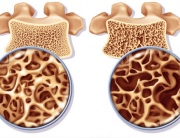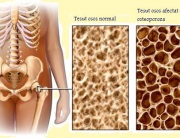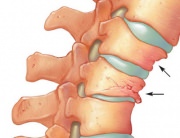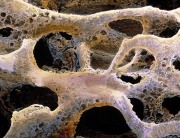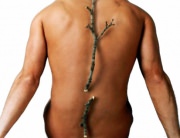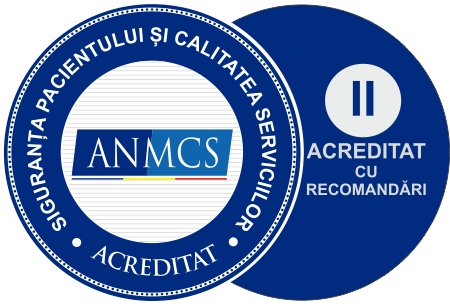Osteoporosis is a condition affecting the bones, causing the weakness, fragility and bone breaking predisposition (fractures). These fractures most often occur in the spine, wrists and hip, but they can also affect other bones, such as the arm or pelvis. In the UK, approximately 3 million people have osteoporosis suspicions, with an yearly rate of more than 230,000 patients with resulting fractures. Even if it was generally associated to postmenopausal female patients, osteoporosis may also be encountered in male patients, young women or children.
The bone is made of a hard outer layer with a collagen network (string elastic fibres), minerals (including calcium), blood vessels and the bone marrow on the inside. This collagen matrix has the appearance of a honeycomb, with spaces amongst the various components. Healthy bones are very dense, and the spaces inside the bone are small. In the bone affected by osteoporosis, the spaces are larger, which weakens the bone, leads to the loss of elasticity and breakage predisposition.
The bone is a living tissue that constantly regenerates by itself. This process is called bone remodelling. There are cells that destroy the bone tissue (osteoclasts) and cells that form new bone tissue (osteoblasts). In order for this process to be completed, certain proteins and minerals are required, which are absorbed from the blood flow.
During infancy, the bones grow and regenerate fast, but this process slows down with the age. Bones stop growing in length around the age of 16-18, but they continue to gain in density up to the age of 27-30. A progressive loss of bone density starts around the age of 35. This loss is a normal process, but some people may suffer from osteoporosis and bone fractures.
What Causes Osteoporosis?
There are several risk factors that can contribute to an accelerated bone resorption and to osteoporosis. Some of these factors cannot be countered.
The risk factors that cannot be countered are:
- Gender. Women are more prone to this disease than men.
- Age. The osteoporosis risk is higher in the elderly.
- Body conformation. Short and slender women have a high risk.
- Race. Caucasian and Asian women have a high risk, unlike African American or Hispanic women.
- Family history. Osteoporosis also includes a genetic predisposition. If one of the family members suffers from osteoporosis or bone fractures, you might also experience the same problem in the future.
Other risk factors are:
- Sexual hormones.. A low level of estrogen caused by the absence of menstruation (amenorrhea) or by menopause can cause osteoporosis in women. The low testosterone level can cause osteoporosis in men.
- Anorexia nervosa. This nutrition disorder may cause osteoporosis.
- Calcium and Vitamin D Intake. . A low calcium and vitamin D intake fosters bone loss predisposition.
- Medication. The administration of certain types of drugs also is a risk factor.
- Level of activity. Lack of physical exercise or lengthy bed rest periods may weaken the bones.
- Smoking. Cigarettes are harmful not only for the bones, but also for the heart and lungs.
- Alcohol consumption. Excessive alcohol consumption causes bone loss and fractures.
Can Osteoporosis Be Prevented?
There are several preventive measures you can take to protect the health of your bones. In order to keep your bones strong and slow down bone resorption, you can:
- adopt a calcium- and vitamin D-rich diet;
- exercise more;
- avoid excessive alcohol consumption and smoking.
Diet:
A healthy diet with a sufficient calcium and vitamin D intake helps strengthen the bones. Most people’s diet includes less than half of the necessary calcium intake.
The best sources of calcium are:
- low-fat milk, yoghurt and cheese;
- calcium-rich foods, such as orange juice, cereals or bread.
Vitamin D also plays a key role in the strengthening of the bones. Some people need vitamin D supplements, provided by medication.
Exercising:
Physical exercises help strengthen the bones. For stronger bones, you can perform the following types of exercises:
- walking;
- trips (on foot);
- running;
- stair climbing;;
- weight lifting;;
- tennis;
- dancing.
A healthy lifestyle:
Smoking is harmful to both the bones, and the heart and lungs. Also, people who tend to drink large quantities of alcohol are prone to bone tissue loss and fractures, effects caused by the improper diet and the risk of falling.
What Are The Symptoms of Osteoporosis?
Osteoporosis is also called the silent disease,, because the bone tissue loss is not accompanied by any symptoms. You might not realize that you suffer from osteoporosis until some effort, an impact or a fall cause a bone fracture.
How Is Osteoporosis Diagnosed?
The bone mineral density measurement is the best way to check bone health.
Densitometry:
- can diagnose osteoporosis and prevent the risk of bone fractures;
- can check bone strength;
- sets if the treatments applied help strengthen the bones.
How Can You Prevent The Risk of Fall?
Men and women suffering from osteoporosis must avoid falling, as it can lead to bone fractures. Some of the most frequent causes of falling are:
- vision disorders;
- low balance;
- certain diseases that affect locomotion (the locomotor system);
- certain types of medication, such as sleeping pills.
Tips To Prevent Outdoor Falling:
- use walking stick or a frame;
- wear rubber sole footwear to avoid slipping;
- walk on grass if sidewalks are slippery;
- in winter time, use salt or sand to defrost the pavement.
Tips To Prevent Indoor Falling:
- keep your rooms tidy, especially the floors;
- use plastic or textile rugs on slippery surfaces;
- wear low heel footwear for proper stability;
- do not walk wearing socks, stockings or slippers;
- make sure all carpets have a non-slip surface or are firmly fitted onto the floor;
- check that the stairs are well lit and that they have handrails on both sides;
- install safety rails in the bathroom: close to the tub, shower and toilet;
- use a rubber bathroom rug for the areas next to the tub and shower;
- keep a hand lamp on your bedside table;
- use a firm ladder with handrail and wide steps;
- make sure the rooms are properly lit;
- use a wireless phone so that you don’t need to rush to the phone when it rings and in order to be able to call for help in the case of an accident.


